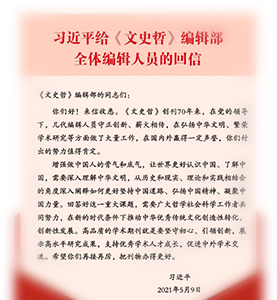《春秋》中的“空白”叙事:“阙文”与“不书”
李纪祥
摘要:“阙文”与“不书”为《春秋》中“空白叙述”的两种表述形态,前者是一种“待书写”,后者则是指向“空白”的“已书写”,而非“未书写”。“待书写”、“已书写”、“未书写”,笔者实已对《春秋》本文进行出对于“空白”三态之区分。“阙文”语出《论语》,被孔子用来指称史官、书写与传统的关系;“不书”则系出于三《传》,用以解释《春秋》中的“赋义”何以与无形之文的“空白叙述”有关。因此,《春秋》中的“空白”状态是可以被解释的,三《传》后学能在“不书”与“阙文”之间进行“空白”态为“待书写”或是“已书写”的意义认知转换,就是最好的例子。作者认为,本文自书写学上对《春秋》本文中“空白”态的研究是重要的,不仅是对“空白”三态的区分,尤其是对“阙文”与“不书”的区分,它暗示了早期有一种书写行动,在这行动中,有一种“空白”意识之察觉,但却没有诉诸“文字”之有形。它更是一种特殊的“书写”的立场:一旦我们在《春秋》“上下文”间揭示出一种“空白叙述”时,“空白”也就与有形符号一样,也是一种书写符号,必须加以阅读及解读。
The “Omitted” and “Unwritten”: “Blank” Narratives in The Spring and Autumn Annals
Li Jixiang
The “omitted” and “unwritten” are two forms of the “blank” narratives in The Spring and Autumn Annals. The former is a kind of “to be written”, and the latter is the “written” referring to “blank”, but not the “unwritten”. The paper presents “to be written”, “written”, and “unwritten” as three different forms of “blank” in the Annals. Coming from The Analects of Confucius, the “omitted” was used by Confucius to allege the relation of the official historian and the writing with tradition; while the “unwritten” originated from the three commentaries of the Annals to interpret how the connotations in the Annals being related to the intangible “blank narratives”. Therefore, such “blanks” could be interpreted, which was best illustrated when the successors of the three commentaries transferred the significance of the “omitted” and “unwritten” from the “blank” to the “to be written” or “written”. The importance of distinguishing the three forms of the “blanks”, especially the “omitted” and the “unwritten” lies in that it indicates a kind of writing act in the early times, in which the sense of “blank” began to awake but had not appealed to tangible writing. And it is more a special position of writing, that is to say, once the “blank narratives” in the context of the Annals is revealed, the “blank” also becomes a kind of writing symbol just like the tangible symbols which needs reading and interpretation.


